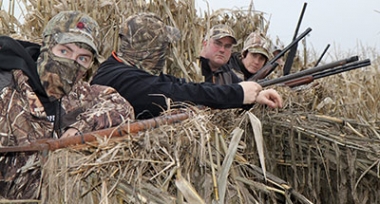
Hunting Sauvie Island’s North Unit
A beginner's guide to waterfowl hunting on Sauvie Island - hunting in the North Unit. Part 4 of a 5 part series.

Table of contents
Part 1: A Beginner's Guide to Waterfowl Hunting on Sauvie Island - An Introduction
Part 2: Hunting Sauvie Island’s East Side Unit
Part 3: Hunting Sauvie Island’s West Side Unit
Part 4: Hunting Sauvie Island’s North Side Unit (you are here)
Part 5: Goose Hunting on Sauvie Island
How to hunt the North Side Unit
North Unit Map (pdf)
The North Side Unit is one large unit that has no blinds. The entire unit is considered a roam unit. It is located at the north end of the island and can be accessed by driving 12 miles from the Sauvie Island Bridge to the end of Reeder Road. It can also be accessed by boat via Multnomah Channel and Cunningham Slough. The mouth of Cunningham Slough is located just across the Multnomah Channel from the entrance of Scappoose Bay. Choices are to set up on either the slough itself or tie up and walk to any of several lakes that can be found along the way. Launch facilities are available at the public boat ramp on Scappoose Bay or the Gilbert River boat ramp on Sauvie Island. Remember, most lakes and waterways in the North Unit are influenced by tides, so water depths are constantly changing.
North Side Unit permit process
The North Side Unit is the only place on the wildlife area where hunters do not need a SIWA hunting permit (permits are voluntary). Access is open to anyone who wants to hunt, seven days a week throughout the Zone 1 waterfowl season, which runs generally from about mid-October through the end of January. Before entering the North Side Unit, hunters may pick up a self-issue hunting permit at an ODFW kiosk at the end of Reeder Road. Fill out the top part of the permit, and put it in the drop box at the kiosk. When exiting the unit, record any harvest information on the bottom half of the permit and deposit it in the drop box. The purpose of these permits is two-fold: 1) to ensure the hunters’ safety by letting ODFW staff know who is in the unit, and 2) to monitor harvest information so staff can better manage bird populations.
Header photo by Mark Nebeker


